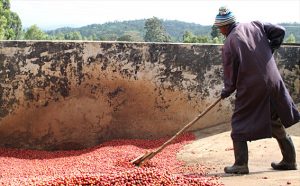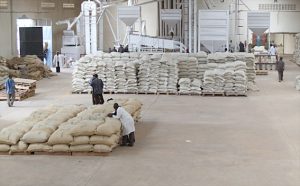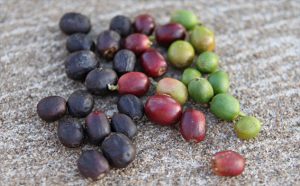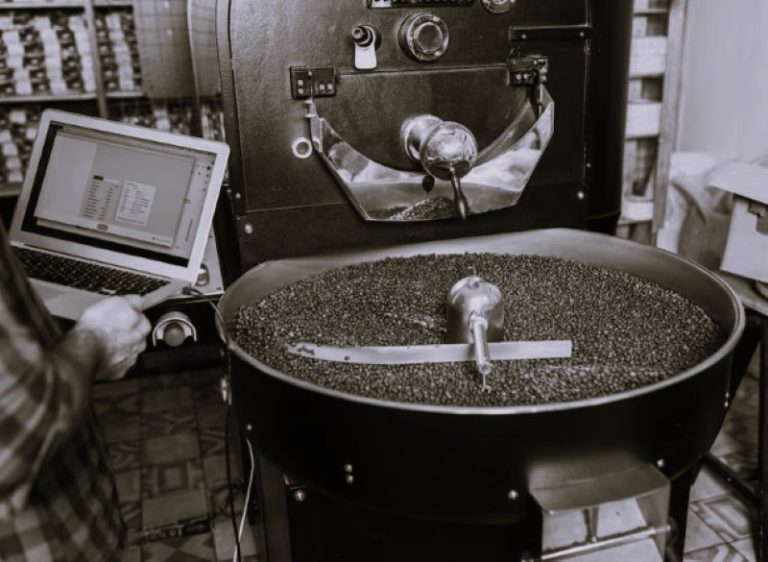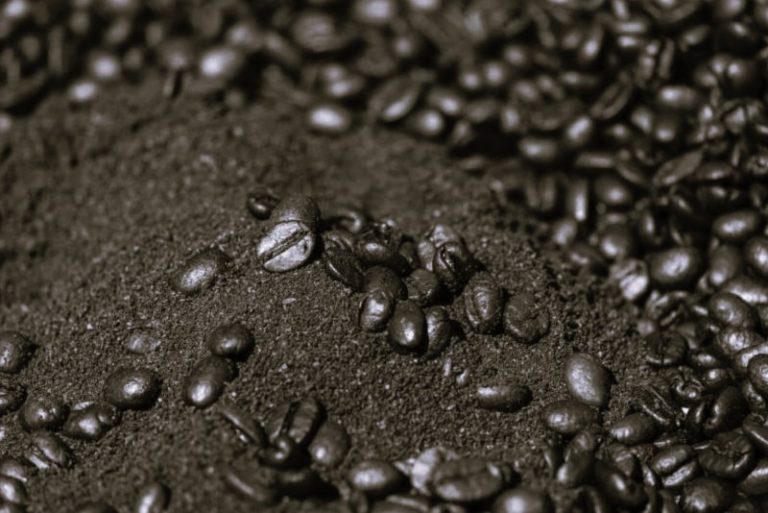Photo by Tim Wendelboe
By Tim Wendelboe
One of the recent trends in coffee is that some of the smaller specialised coffee roasters around the world and in the Nordic Countries are starting to treat coffee as a seasonal product. For many of you this may be a bit frustrating as a lot of your favourite coffees might be unavailable from your local roaster for long periods of the year.
Not long ago, most roasters were offering coffees from all over the world all year round. Even in most literature about coffee you can read that if the green unroasted coffee is stored properly, it is a very stable product and will last for over a year without deteriorating significantly.
So why have some roasters started to treat coffee as a seasonal product? I think a lot of the reason is that we are paying more for coffee, getting higher quality beans and roasting and preparing the coffee better than ever before. Also, the Nordic Countries are known for buying great coffee, consuming a lot of coffee and most of the coffee is still consumed as black filter coffee.
The general Nordic style of roasting and brewing greatly enhances the natural flavours of the green coffee which in my opinion is a great thing. Except when the green coffee no longer tastes good. A problem that is almost impossible to prevent from happening because we need to stock coffees for a long period of time as it is only harvested once a year in most coffee producing countries.
Problem With Age
The problem with storing unroasted coffee is that after a certain time, (depending on how the coffee is dried, packaged, shipped and stored) the coffee will start loosing moisture and taste more bitter and woody after roasting (almost like corked wine). This happens to all coffee regardless of how well it is produced, because the fats in the green beans oxidise and turn rancid. Personally I consider the taste of age, or “past crop” as coffee tasters call it, to be a defect just like ferment or mould is considered defects. The only difference is that it happens during storage rather than during drying or fermenting the coffee. Past crop flavour tastes a lot like what jute bags smell like, or even dry straw / burned wood. This flavour is considered positive by some people as the coffee also looses some acidity and become less bright. The huge sales of aged coffees such as Monsooned Malabar, Old Brown Java, etc. is proof that there is a lot of people who still like woody old coffees. My problem with this style is that you can barely taste the coffee’s origin as the woody “past crop” character is so dominant that even Kenyan and Ethiopian coffees will taste similar to Brazilian and Sumatran coffees when they are old.
Green coffee storage
Photo by Tim Wendelboe
After coffee is dried and sorted in the producing countries, the coffee seeds or (green beans if you like) are exported around the world, mainly packed in huge jute bags. Jute is not a great barrier for moisture and fumes, so roasters specialising in importing coffees of the highest quality have for some years now experimented with grain pro (a plastic liner inside the jute bags) and vacuum packing the coffee in order to keep the moisture content in the green beans more stable and provide a higher protection against surrounding moisture, odours and fumes. Although these new packing technologies have helped extending the coffee’s shelf life to some extent, there are several other factors that affect green coffee’s shelf life. Uneven drying and storage of coffee in hot and humid environments in producing countries reduces the shelf life a lot and is difficult for both the importer and roaster to document. Therefore packing in vacuum or grain pro bags does not solve the problem of coffees getting old.
Some of the leading roasters in the world have even started storing coffee in freezers in order to prevent ageing, and yes, this might help a bit, but the coffee needs to be packed in vacuum bags, creating a lot of waste and the need of huge freezing facilities is both expensive and not very sustainable.
Treat Coffee as a Seasonal Produce
In my opinion, the solution to getting rid of past crop coffees is to treat coffee like a seasonal product just like Norwegian apples or strawberries. That means buying the green coffee as soon as it is harvested, getting it shipped as quickly as possible and roast and use it within 4-6 months after it arrives the consuming country. Although this sounds easy to do, there is a lot of challenges that needs to be handled in order to get the freshest coffees in house and use it before it is too late. Finding the coffee is one thing, but getting samples prepared, preparing the coffee and shipping the coffee might stall in the producing country due to the high volumes that needs to be sold and shipped during harvest season. If the roaster / importer is not pushing things forward it is very easy to fall behind in the line as exporters tend to prioritize the bigger more easy to handle bulk-volumes first.
Another challenge is that a lot of the producing countries harvest between December and March. This means that during December to February, as a “seasonal roaster” you barely have any diverse offers in stock. As a matter of fact, this year at Tim Wendelboe, we only had Brazilian coffees for sale from January to March. The good thing was that we did not loose any sales, and our customers loved tasting the 4 different Brazilian coffees we offered as they all tasted very different. I admit that the differences were very subtle compared to what you can find elsewhere in the coffee world, but I would prefer to taste the natural fresh coffee’s subtle nuances rather than tasting the dominant woody and bitter flavours in coffees that is supposed to be very different, but only tastes old.
How to Buy Seasonal Coffee
As a consumer it is very confusing to buy coffee and even more so to buy fresh crop coffee. Although you might think that since Kenyan coffee is harvested in December, you can assume that the Kenyan coffee that you buy in June is reasonably fresh, you might be buying coffee that is way past its fresh stage. This is because a lot of roasters still buy and stock much more coffee than they can sell within a year, so it is very difficult to tell when the coffee you buy is fresh before you taste it.
Photo by Tim Wendelboe
Fortunately most serious roasters are already writing when the coffee was picked on the label on the bag, but it is still difficult to know if the coffee has the taste of age or not. In fact I have had coffees that tasted fresh after 14 months of storage as well as coffees that tasted old and woody only 2 months after harvest. Therefore my only recommendation is that when you buy coffee, don’t only ask for freshly roasted coffees, ask for freshly harvested coffees too.
Most importantly, if you find a favourite coffee from a specific origin, don’t expect it to taste great forever. Coffees do fade sooner or later so don’t be afraid to explore coffees from other origins. There are thousands of great coffee farmers around the world and if you search you can find great tasting coffees from most of the coffee growing countries around the globe.
PS: To learn more about when coffee is harvested and shipped, have a look at this great calendar that Tom Owens at Sweet Marias has made.

